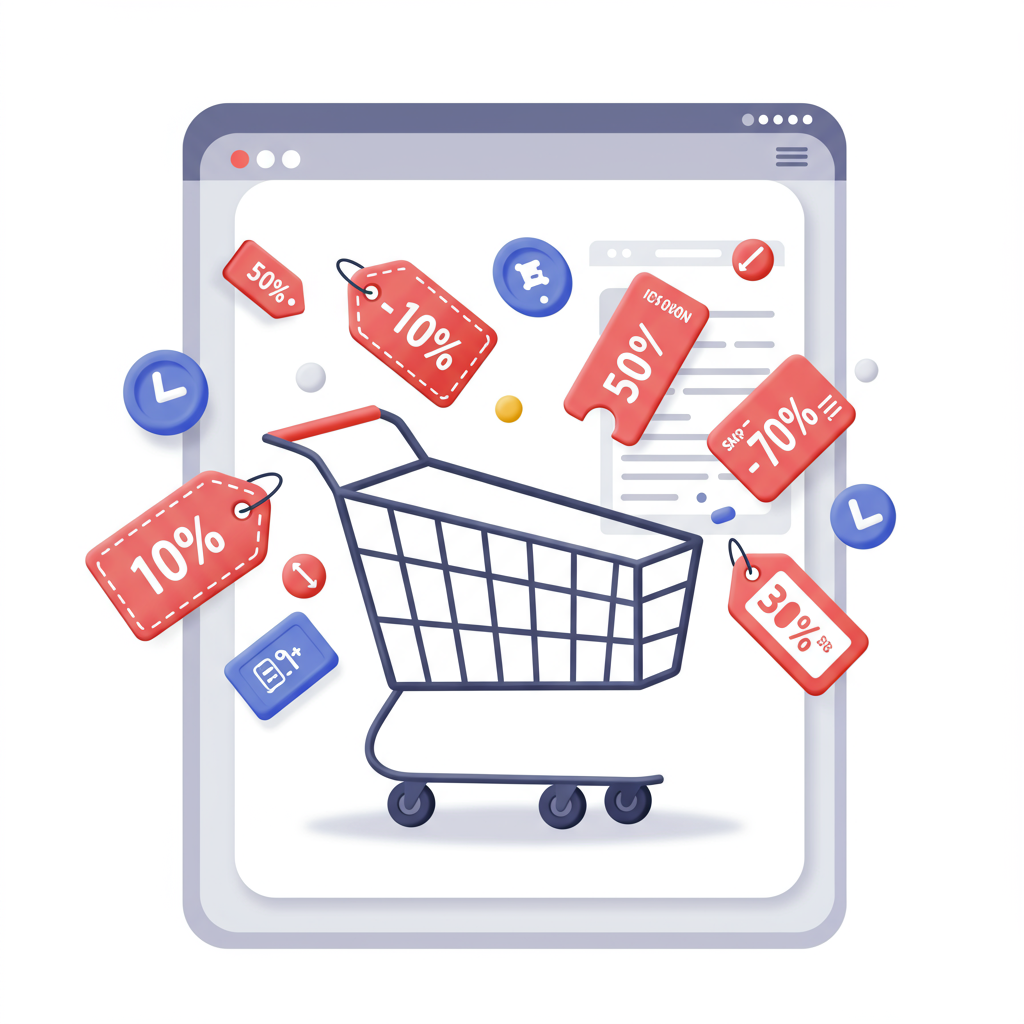Unlock the power of promotional pricing to boost sales, attract customers, and build loyalty on your Shopify store.
As a merchant, I know the constant quest for growth and customer engagement. One of the most powerful tools in our arsenal, often misunderstood or underutilized, is the strategic application of coupons and discounts.
It’s easy to think of discounts as simply ‘cutting prices,’ but I’ve learned that when used correctly, they are a sophisticated marketing instrument capable of achieving a multitude of business objectives.
My goal with this article is to share my insights and guide you through leveraging Shopify’s discount features to their fullest potential, ensuring every promotion serves a clear purpose for your business.
First, let’s clarify why discounts are so effective. They create a sense of urgency, offer perceived value, and can significantly influence purchasing decisions.
They aren’t just for clearance sales; they can be a cornerstone of your customer acquisition, retention, and inventory management strategies.
One primary benefit I’ve seen is their ability to attract new customers. A compelling first-purchase discount can lower the barrier to entry, encouraging hesitant shoppers to give your products a try.
Secondly, discounts are excellent for boosting sales volume. During slow periods or when launching new products, a well-timed promotion can generate immediate interest and drive traffic.
Thirdly, they are invaluable for clearing old or seasonal inventory. Rather than letting stock sit and depreciate, a targeted discount can move products quickly, freeing up capital and warehouse space.
Fourth, I use discounts to reward loyal customers. Exclusive offers for repeat buyers or members of a loyalty program make them feel valued, encouraging continued patronage and strengthening brand affinity.
Finally, discounts are incredibly effective for abandoned cart recovery. A small incentive, like a percentage off or free shipping, can often be the nudge a customer needs to complete their purchase.
Shopify offers a robust discount system, allowing for various types of promotions. Let’s explore the most common ones I utilize.
Percentage-based discounts are straightforward: ‘15% off your entire order’ or ‘20% off specific collections.’ These are great for general promotions or encouraging larger basket sizes.
Fixed amount discounts, like ‘$10 off when you spend $50,’ are excellent for setting a clear threshold and encouraging customers to reach a certain spending level.
Free shipping discounts are incredibly powerful. High shipping costs are a leading cause of cart abandonment, so offering free shipping, especially for orders over a certain value, can significantly boost conversions.
Buy X Get Y discounts, such as ‘Buy one, get one 50% off’ or ‘Buy two, get a third free,’ are fantastic for moving multiple units of a product or encouraging exploration of your product range.
Gift with purchase promotions, where customers receive a free item when they spend a certain amount or purchase a specific product, add perceived value and can introduce customers to new products.
Setting these up on Shopify is intuitive. From your admin, navigate to ‘Discounts,’ then click ‘Create discount.’ You can choose between ‘Discount code’ (which customers enter at checkout) or ‘Automatic discount’ (which applies automatically).
I always configure my discounts carefully, setting usage limits (e.g., one per customer), specific date ranges, and minimum requirements (e.g., minimum purchase amount or quantity of items).
The key to strategic discounting, in my experience, is to define your goal *before* you create the discount. What exactly do you want to achieve?
If your goal is new customer acquisition, a ‘10% off your first order’ code promoted on your homepage or through welcome emails is ideal.
For loyalty, I might send an exclusive ‘25% off for our VIP members’ code to my email list of repeat customers.
To recover abandoned carts, a follow-up email with a ‘5% off to complete your order’ can be surprisingly effective.
Consider segmentation. Don’t offer the same discount to everyone. Target specific customer groups based on their purchase history, location, or engagement level.
Timing is also crucial. Flash sales create urgency, while seasonal promotions (like Black Friday or holiday sales) align with consumer buying patterns.
I often make offers exclusive. Promoting a discount only to your email subscribers or social media followers makes them feel special and encourages sign-ups or engagement.
Be clear about stacking rules. Can customers combine multiple discounts? Shopify allows you to control this, and clear communication prevents frustration at checkout.
A critical consideration is discount depth. While a deep discount can attract attention, I’ve learned that over-discounting can devalue your brand and train customers to only buy when items are on sale.
I always recommend A/B testing different discount offers. Try 10% off versus free shipping, or a fixed amount versus a percentage, to see what resonates best with your audience.
Finally, track and analyze your results. Shopify’s analytics provide valuable data on discount usage, revenue generated, and conversion rates. Use this information to refine your future strategies.
Avoid common pitfalls like creating overly complex discount rules that confuse customers, or running too many promotions simultaneously, which can dilute their impact.
Integrate your discount strategy with your broader marketing efforts. Promote your codes through email campaigns, social media posts, and even paid ads.
Remember, discounts are part of a larger ecosystem. They can complement loyalty programs, subscription models, and excellent customer service.
My advice to you is to be thoughtful and data-driven. Every discount should have a purpose, and its effectiveness should be measured.
What do you think about this article? Have you found these strategies helpful in your own Shopify store?
By approaching coupons and discounts strategically, you’re not just cutting prices; you’re investing in customer relationships, optimizing inventory, and ultimately, empowering your Shopify store for sustainable growth.






